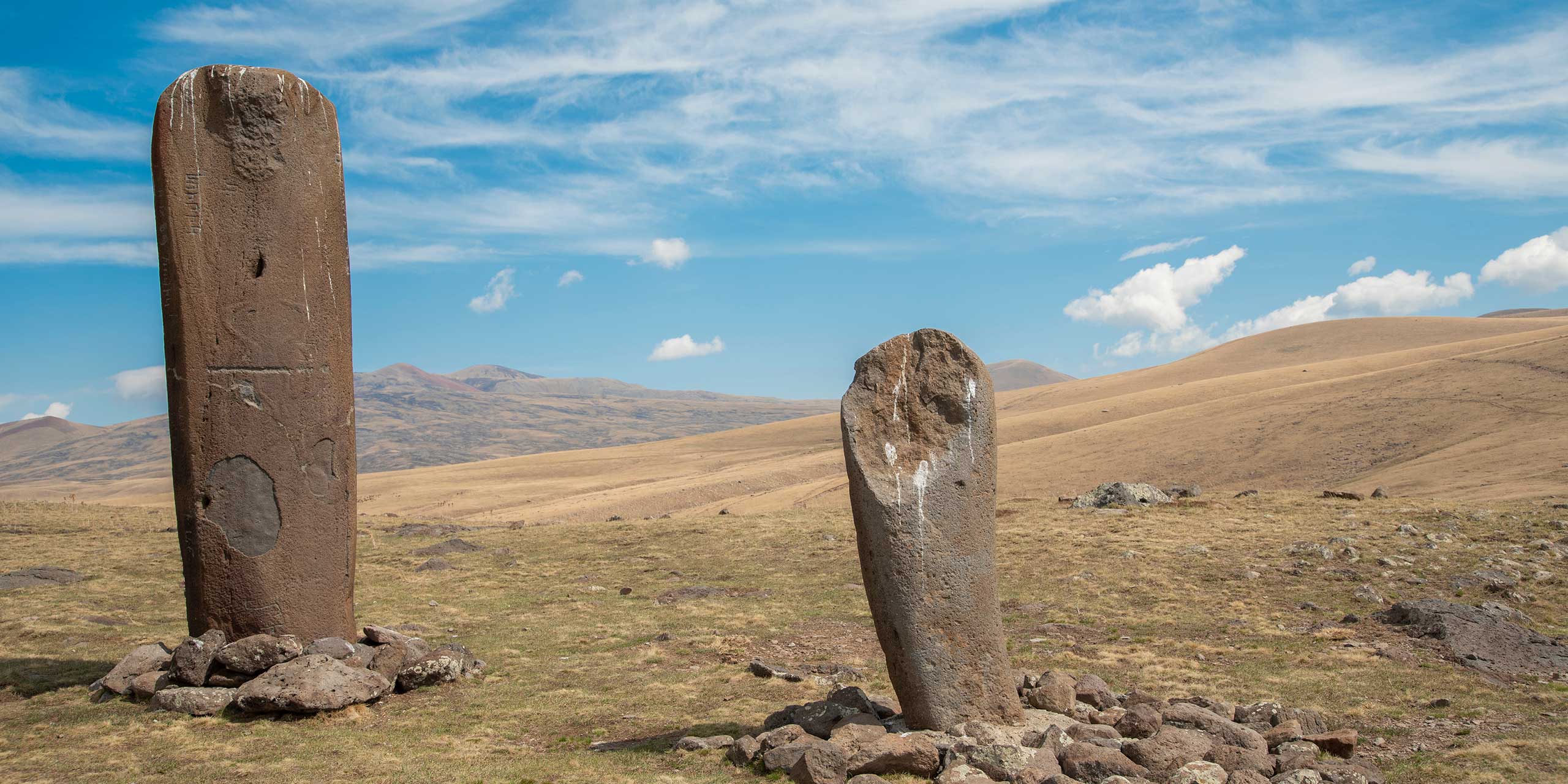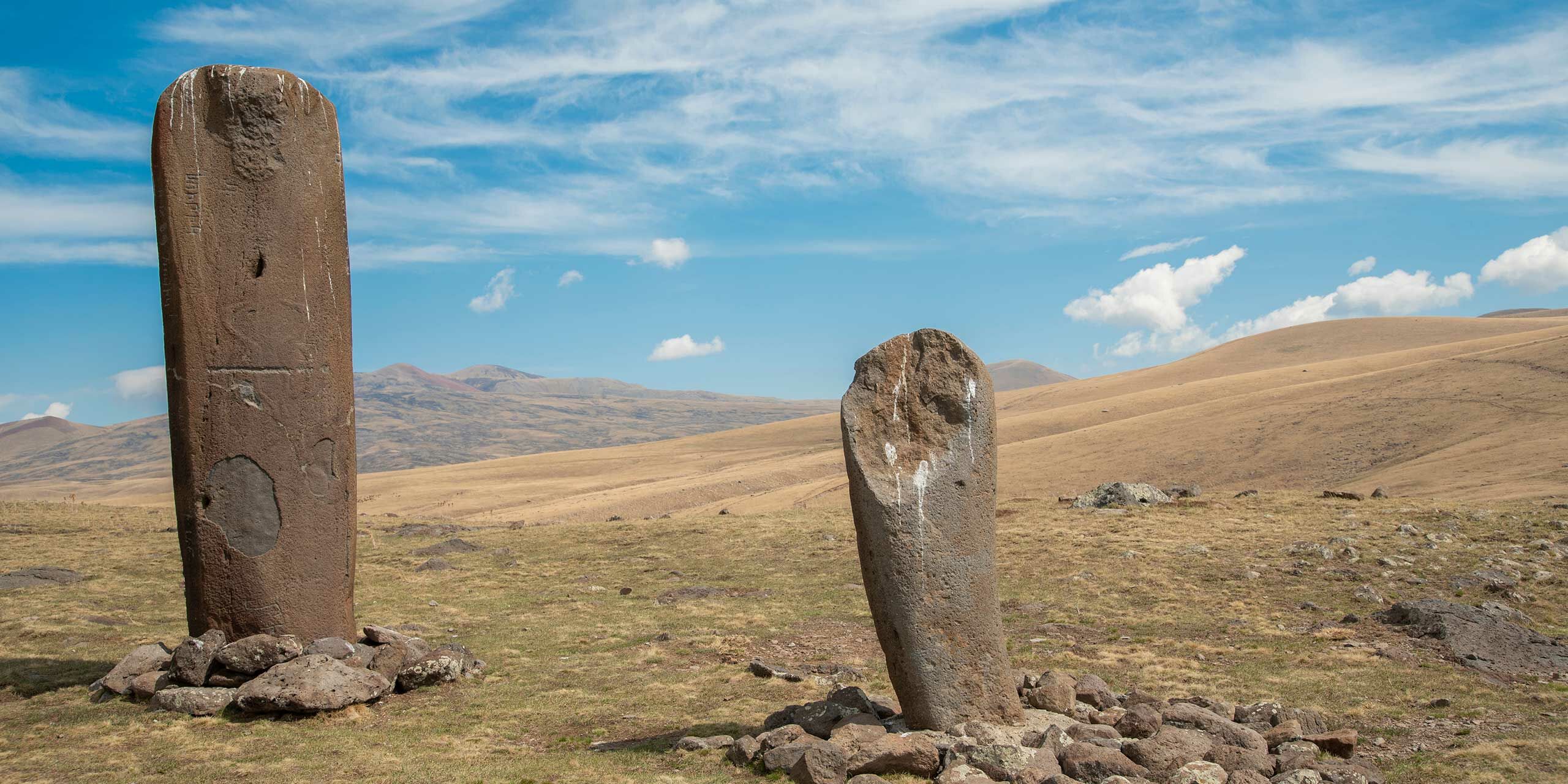
When thinking of the Caucasus region and dragons, the first place that might come to mind is Georgia — named for the eponymous dragon slayer. But in both mythology and in the landscape, dragons are an important part of mythology and history in Armenia. Ancient gods and monolith builders believed that, in Armenia, here be dragons — or rather vishaps.
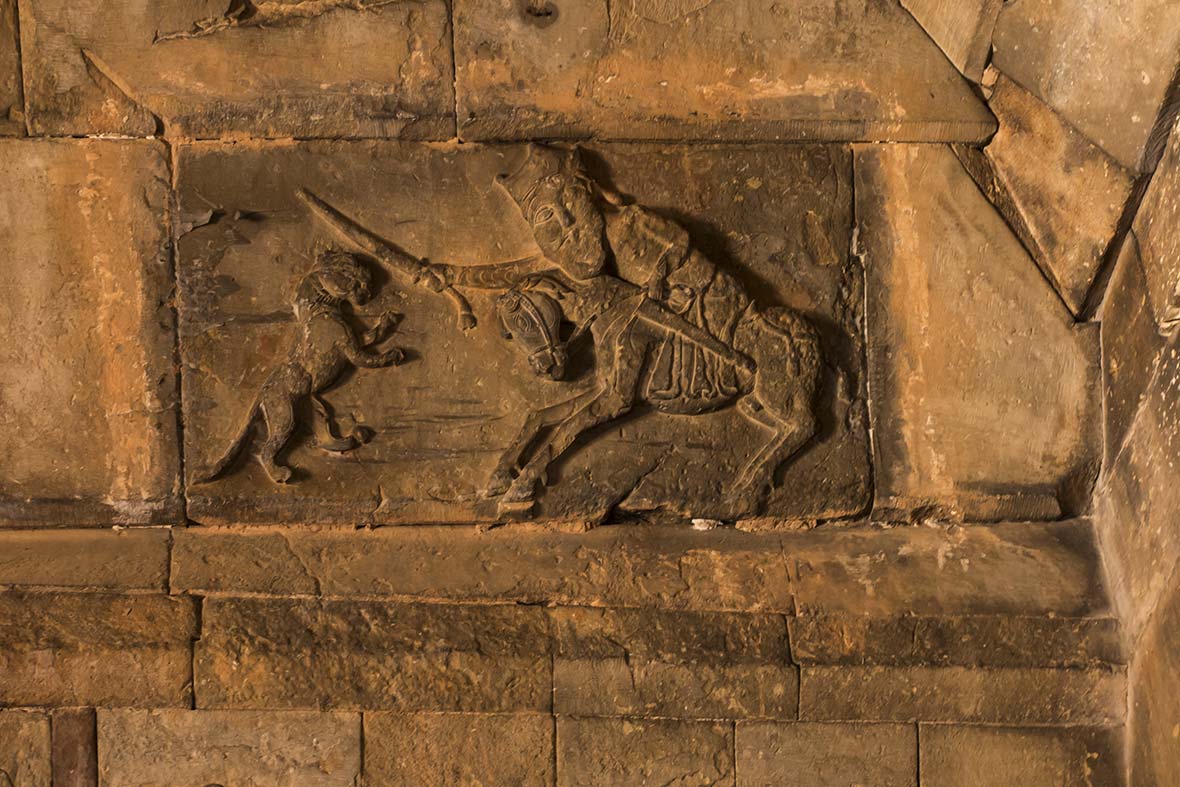
We should probably begin by saying that there aren’t any dragons in Armenia — in fact there are very few reptiles altogether. But born from the skinks and snakes and turtles of the Armenian highlands are tales of dragons from both the pagan and Christian eras of this landlocked country. The constant stream of visitors from the Greecian and Persian empires also brought with them tales of dragons — most famously Jason and his Argonauts.
The southern border of ancient Colchis is found in modern day Armenia, and this was home to the tales of many Greek myths, including the home of the Golden Fleece, which was guarded by a presumably Caucasian dragon.
Like many depictions, dragons in Armenian legend are mercurial. Inhabiting lakes and rivers, they are said to bring both disaster and fortune. Mount Ararat, visible from the capital of Yerevan, was said to be home to a vishap and was also said to steal children and toddlers, leaving an evil version in their place. According to ancient beliefs, the dragon here fought Vahagn, an event still celebrated by Armenian pagans.
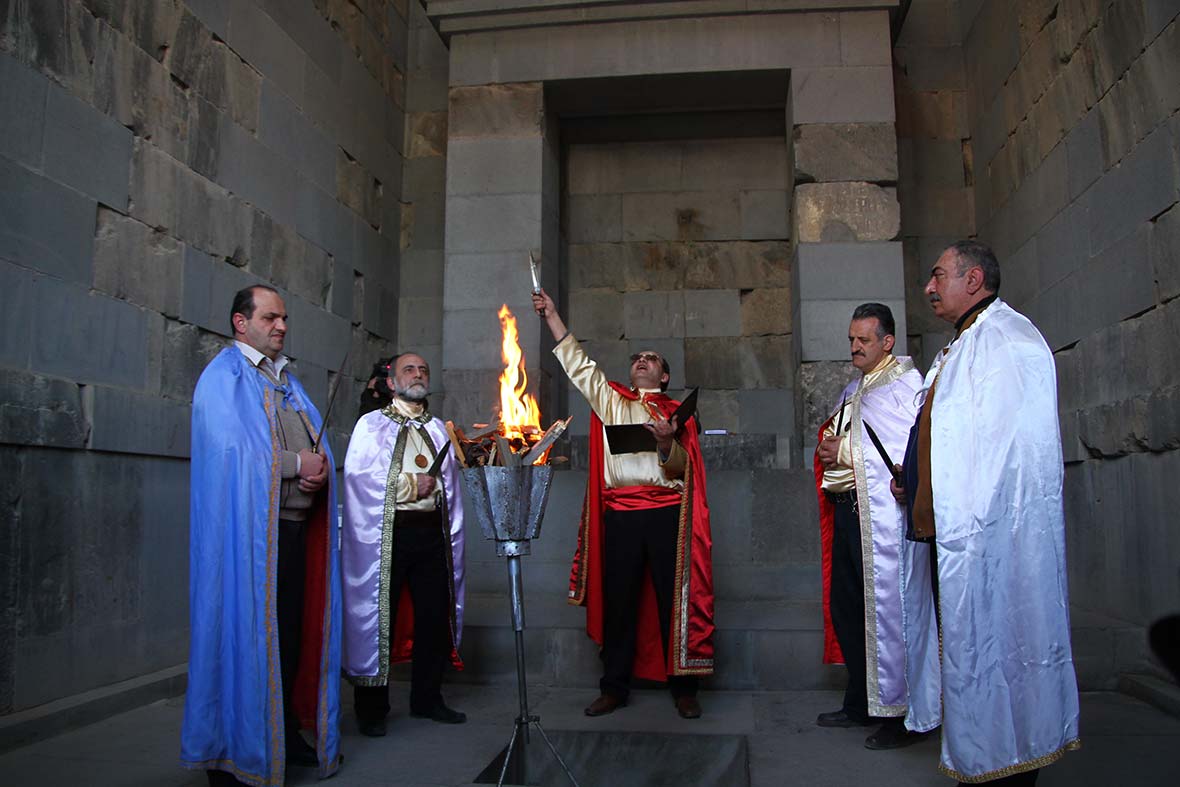
Vahagn the Dragon Reaper — who has an indisputable cool name — reaps, as his name suggests, dragons. God of fire, thunder, and war, Vahagn is an ancient pagan deity with a mix of Zoastrian, Indo-Iranian, and Greek influences throughout the Caucasus region and beyond.
Not only will visitors see Vahagn in statues in Yerevan and poems and even video games, but sites such as Etchmiadzin Cathedral were originally pagan altars to the fire god Vahagn, fittingly built over by Gregory the Illuminator. With a beard and eyes of fire, worshipers of the old ways still pay tribute to the dragon slayer in Armenia in a pagan temple in Garni to celebrate Vahagn’s birthday.
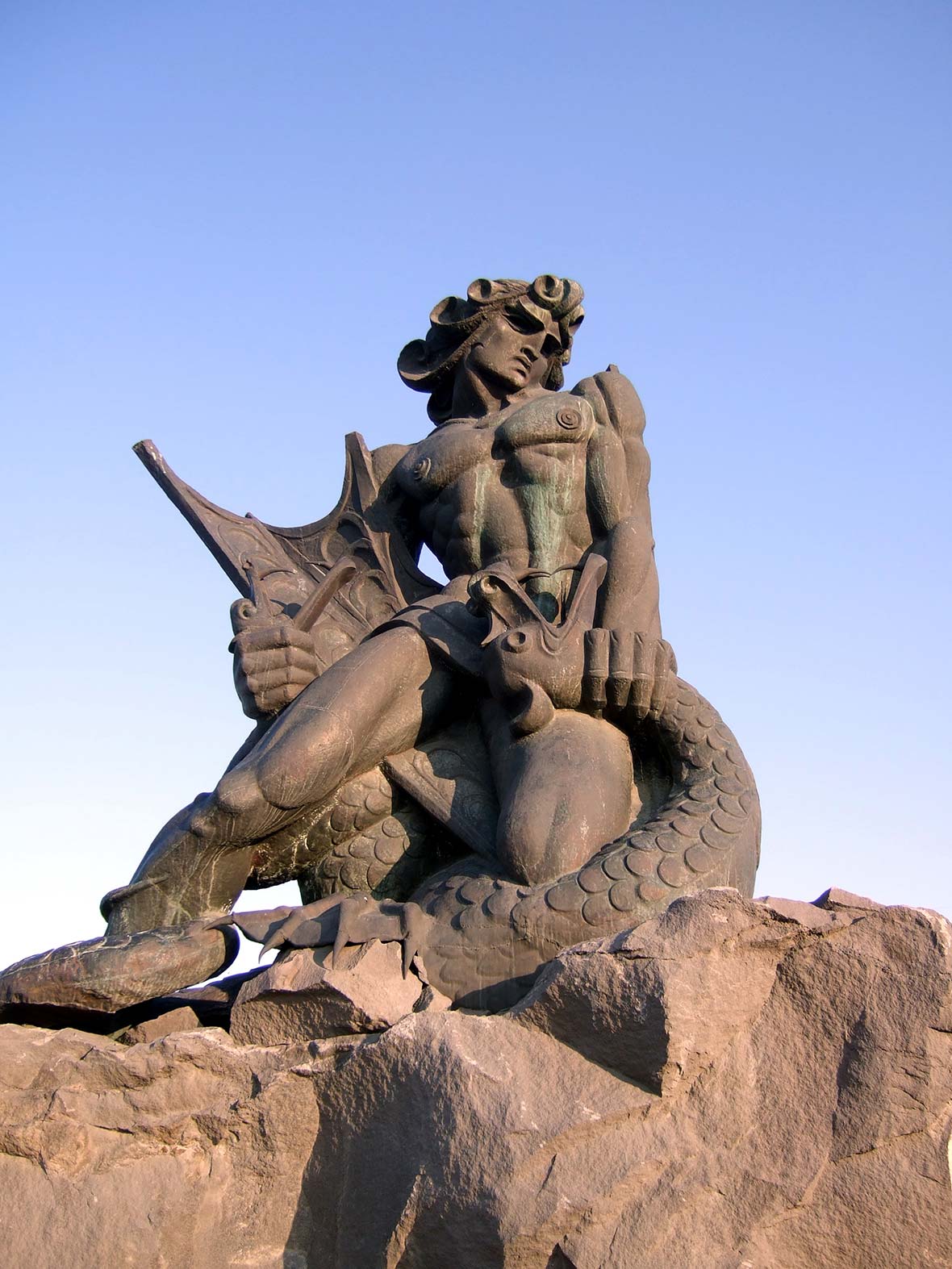
But, for travelers, there is one aspect of the dragons that remains standing from times long forgotten, the vishapakar — meaning dragon stones. These monoliths dot the Armenian highlands and are notoriously difficult to date. Some are recent, some are hundreds of years old, some, like those in Garni feature cuneiform inscriptions and are said to be up to 4,000 years old.
Gone unnoticed in modern historical records, the first recordings of vishap stones were only made in the late 19th century and published in the 20th century. Today, they are found in popular areas and the association of dragons with water are found in their locations: Lake Sevan, canals of Mount Aragats, and the backwaters of the Gegham mountains, and the Coruh River.
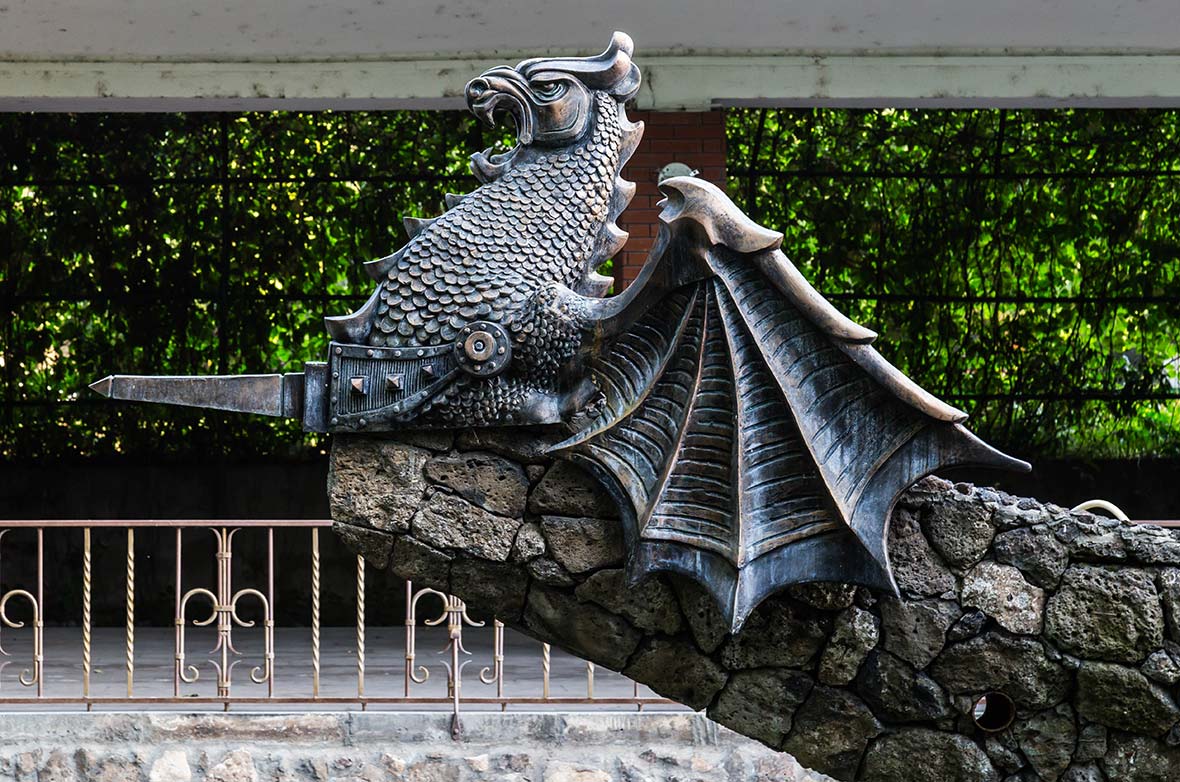
Around three to five meters high, most are in fish form that resembles a catfish. Of the three main types of dragon stone, none are actually dragons. Bull forms are square and thick, the fish are oval, and the “fish-bull” form contains both. Despite how they’re found today, most vishap stones are found having fallen down.
With such a wide history and legend attached to them, it’s sometimes claimed that the Golden Fleece hung from a dragon stone, a “cosmic tree” according to the myths.

